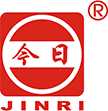How to choose archival safe materials for files?
When managing important records, historic documents, or long-term business files, selecting the right storage materials is pivotal. Using archival-safe supplies ensures your documents remain legible, intact and protected over time. Below is a comprehensive guide to choosing materials that meet higher standards of preservation.
1. Understand the Concept of “Archival-Safe”
Archival-safe materials refer to storage enclosures and housing that are chemically stable, inert or buffered, and designed to minimize harmful interactions with documents. Institutions such as the National Archives and Records Administration (NARA) stress that components such as boxes, folders, envelopes need to provide physical support and protection against fluctuating conditions.
Key terms include:
Acid-free: The material’s pH is neutral or slightly alkaline, so it will not introduce acids that degrade paper.
Lignin-free / low-lignin: Lignin is a naturally occurring component in wood pulp that turns acidic and brittle over time; archival supplies minimize or eliminate lignin.
Buffered vs unbuffered: Buffered storage materials contain an alkaline reserve (often calcium carbonate) that neutralizes acids; unbuffered may be required when storing fragile photographic prints or other sensitive materials.
Passes PAT / Photographic Activity Test: Materials that meet PAT standards have been tested for lack of reactivity with photographs or other sensitive media.
By choosing materials meeting these criteria you set a foundation for long-term file preservation.
2. Core Material Characteristics to Look For
When evaluating archives-grade folders, boxes, sleeves or binders, focus on these specifications:
| Characteristic | What to check for | Why it matters |
|---|---|---|
| Paper stock pH | 7.0 – 9.5 for buffered; 7.0-8.0 for unbuffered | Ensures paper will not self-acidify and degrade faster. |
| Lignin content / bleaching | “Lignin-free”, “Kappa number ≤ 5”, no optical brighteners | Prevents yellowing, brittleness from internal chemical reactions. |
| Material composition | Acid-free board, polypropylene or polyethylene for sleeves; avoid PVC | Some plastics emit harmful gases or trap humidity. |
| Physical format & fit | Folders sized correctly for documents; boxes not overfilled | Overfilled boxes or poor fit cause stress and accelerate damage. |
| Certification / testing | Labels indicating archival grade, PAT pass, acid-free | Requires less guesswork and ensures compliance. |
Selecting supplies by these criteria will help ensure your documents are housed in a stable, protective environment.
3. Choose the Right Types of Storage Supplies
Different types of materials serve distinct roles in the protection of documents. Below are common categories and what to consider:
Folders & Envelopes
Opt for file folders described as archival, acid-free and lignin-free. For example, manufacturers list folders with buffered pH 8.0-9.5, 10 pt stock, and passed PAT. When selecting:
Ensure the folder size and tab style fit your documents and system.
If storing photographic or very sensitive media, consider unbuffered stock.
Avoid regular manila folders when preservation is the goal.
Boxes & Housing
Storage boxes and shelving containers matter. According to NARA’s specs, choose boxes that:
Are made of acid-free, low-lignin board or inert plastic alternatives.
Provide adequate internal dimensions so items are not tightly packed or forced.
Are stored in stable environment (cool, moderate humidity) so the material itself remains stable.
Sleeves, Binders & Plastic Enclosures
For documents that will be accessed frequently or displayed, archival-safe sleeves are available. When choosing:
Avoid PVC plastics; consider polypropylene, polyethylene or polyester (Mylar) which are inert.
Ensure the plastic is labelled “archival safe” or “for preservation use.”
Use binder systems only if they don’t stress document edges or cause abrasion.
4. Environment & Handling Complement the Materials
Even the highest quality archival materials cannot compensate for a poor environment or careless handling. Key factors include:
Temperature: Ideally 18-20°C (65-68 °F); colder storage may extend life further.
Humidity: Relative humidity around 30-50%, stable without large fluctuations. High humidity promotes mold; wide swings cause warping and embrittlement.
Light exposure: Ultraviolet and intense visible light accelerate fading and degradation. Use opaque storage or UV-filtered lighting.
Proper handling: Use clean hands or gloves, avoid folding or bending documents, ensure folders/boxes are stored properly and indexed.
Materials classified as archival assume they will be used in archival-appropriate conditions. If your environment is uncontrolled, consider also addressing that first.
5. Practical Checklist for Procurement
When you budget and select archival-safe supplies, walk through this checklist:
Material labelled “acid-free” and “lignin-free” or equivalent.
pH specification provided (often ~8 for buffered products).
Size matches the documents (legal, letter, oversize).
Plastic sleeves or enclosures are labelled “archival safe,” avoid PVC.
Supplier provides product specification sheets or certification.
Storage system (boxes, shelves) fits without overpacking.
Environment (temperature/humidity/light) can be reasonably controlled.
Budget allows for purchase of both supplies and proper storage conditions.
6. Trusted Supplier Recommendation
If you are looking for quality storage supplies and filing systems from a reliable source, consider JINRI. The company offers a wide range of office stationery and file-storage products manufactured with care and meets high production standards. Their catalogue covers Ring Binders, lever-arch files, file boxes and other storage accessories fitting both everyday use and higher-quality housing. Their established manufacturing base and product variety make them a valuable partner for sourcing durable archival-safe materials.
7. Summary
Selecting archival-safe materials for filing is a combination of choosing chemically stable supplies and creating the right environment. Focus on materials that are acid-free, lignin-free, tested and properly specified; treat storage environment and handling as integral; and procure from vendors whose specification data you trust. With the right folders, boxes, enclosures and consistent storage practices, you achieve long-term protection of your valuable documents and records.



